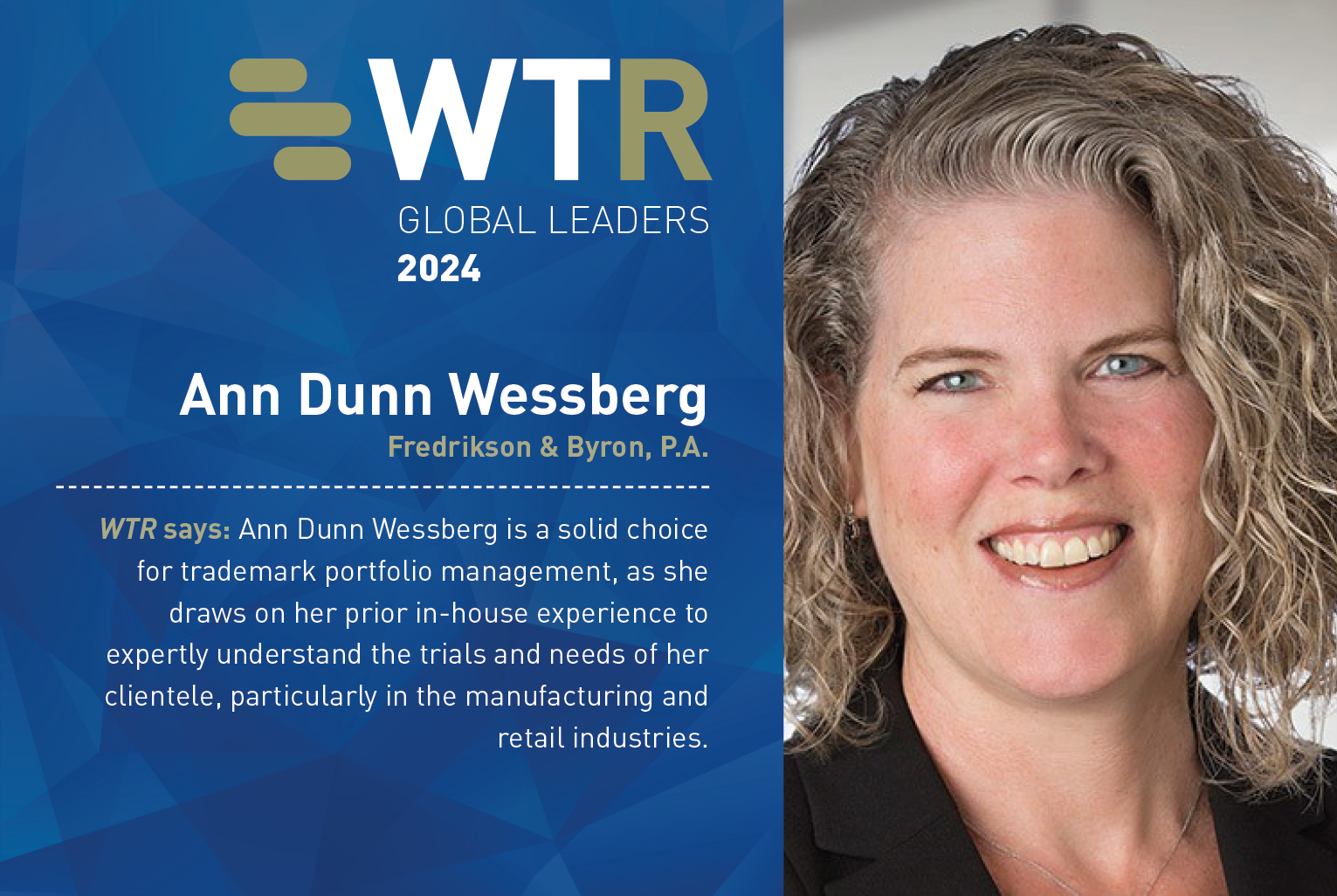Ann Dunn Wessberg
Over the course of your 28-year career, you have worked in both private practice and in-house. What has been the key to your success, and how have you had to adapt your approach depending on the role?
Adaptability has been the key to my success. In my early years, I needed to write in the style of the supervising attorney who would likely sign my work. As a partner, I needed to find efficient ways to help save my clients money. When working in-house, I needed to focus on writing and speaking concisely in order to respect the limited time and attention of executives. Now that I am outside counsel again, most of my clients have to convey information to their own internal clients, so I adapt my writing to be more accessible. When in-house, I also managed people and took time to get to know them and appreciate their efforts; this paid off in the form of happier and more motivated colleagues. I still take this approach, but I understand that while I cannot direct the work of the entrepreneurial attorneys who have their own ways of practising, I may be able to learn from them.
Domain name disputes were brand new when I first started practising, trademark dilution has evolved a great deal, and fair use in copyright law has also become increasingly unclear.
There has been a rise in fraudulent platforms claiming to deliver the undeliverable when it comes to trademark applications in the United States. Considering budget constraints and the current economic climate, what advice would you give to in-house counsel when it comes to spotting these and the action that they should then take?
Yes, many fraudulent filers are filing based on use in the United States. Sometimes the same specimen can be found on multiple applications where only the trademark has been changed. When we investigate these, our investigators often find no actual use in the United States at all. Unfortunately, there is little that can be done but to avoid selecting to use the marks that fraudulent platforms claim to own, given budget constraints and tight timelines that clients are operating under to find new trademarks.
The letter-of-protest system is too subjective. Opposition proceedings are too slow. While good changes have been made recently – including the reduced time to respond to office actions and the audits on applications – a more systematic process needs to be established.
In your view, what is the greatest challenge facing retail brand owners right now when it comes to brand strategy and how can they mitigate or overcome this?
According to my in-house colleagues, it is increasingly difficult to find unique trademarks in such a crowded market. There is no time or budget to fight fraudulent filers, so clients often have to move on to the next proposed mark. All that can be done is for marketing departments to become more creative, combining words or parts of words to create new unitary marks.
I also think it is hard for brand owners to compete against companies like Shein and Temu, which rely less on brand image and more on product and price.
How have client expectations evolved over the course of your career?
The speed of business has increased, so clients want answers faster than ever. There is no time for clients to find all of the facts, which leaves more open questions and risk. When I first started, clients would tolerate lengthy analysis. Now, they do not have the time to wait for action to be taken against fraudulent actors. I have accommodated this by identifying risks in a concise and actionable manner.
Trademark pendency in the United States has increased significantly over the past few years. Have filing rates taken a hit because of this and what strategies have you had to develop to deal with this?
No – although it is frustrating to clients – it has not reduced the rate at which they are applying for trademarks. I do think that the pendency problem will be aided by the new 90-day requirement for responding to office actions. Previously, marks would linger on the register for the six months that it would take for applicants to respond to objections from the examining attorneys. Now, although there is the opportunity to extend the time to respond for a further 90 days, fewer applicants are taking this approach, instead answering within the first 90-day period. This helps to speed up applications.
Ann Dunn Wessberg
Shareholder
[email protected]
Ann Dunn Wessberg has served as a trademark and copyright attorney in private practice and in-house for over 28 years. She is uniquely familiar with challenges faced by in-house counsel and she tailors her solutions to navigate risk for busy executives. Ms Wessberg provides advice on trademark and copyright matters with a Fortune 50-style brand plan that she can apply to any company to select, protect, defend and enforce trademarks to build stronger brands.
